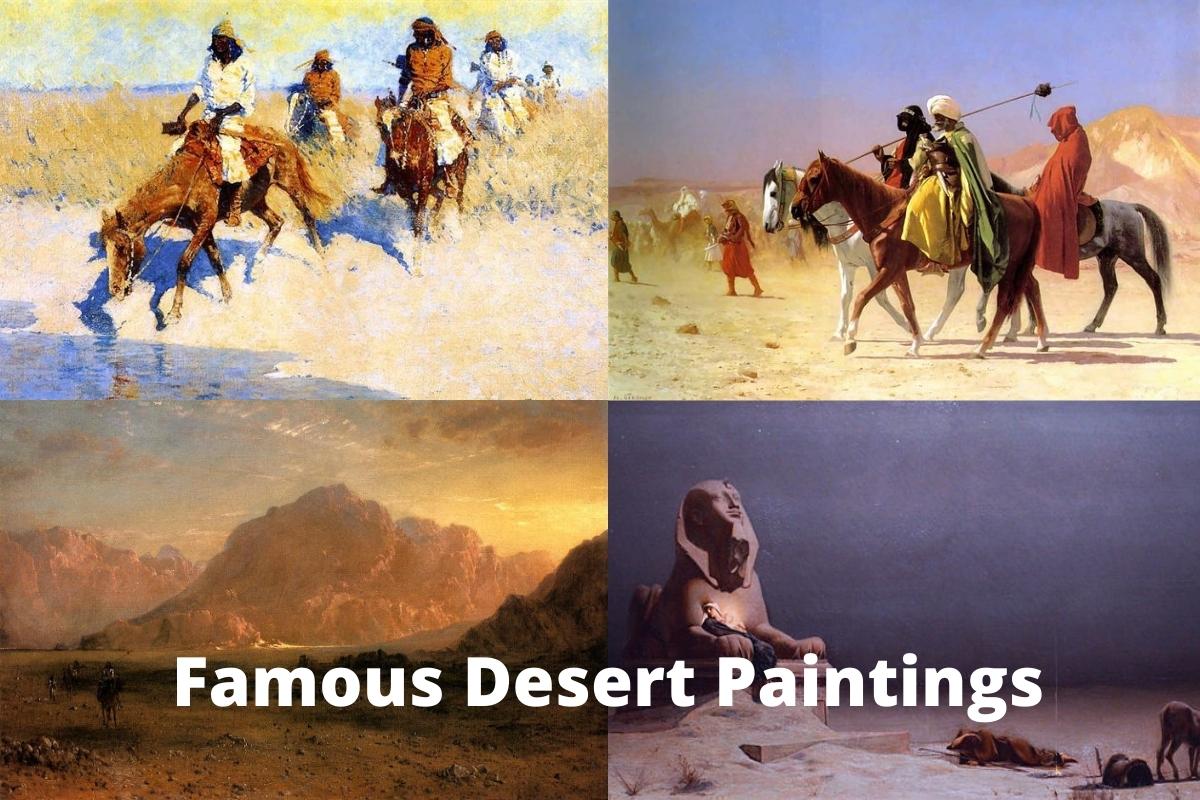While some artists remained in the comfortable studio’s others were drawn to the deserts of the world in particular the deserts of the Western United States and the deserts of the Arab world.
Painters who worked “en plein air,” out from their studios, were able to better capture the unusual and sometimes desolate landscape’s delicate and shifting hues.
Life was hard for these artists often traveling on horseback and living in very basic conditions for months on end, yet they persevered and were rewarded with some of the most spectacular landscapes on earth.
Famous Desert Paintings
1. Arabs Crossing the Desert – Jean-Leon Gerome
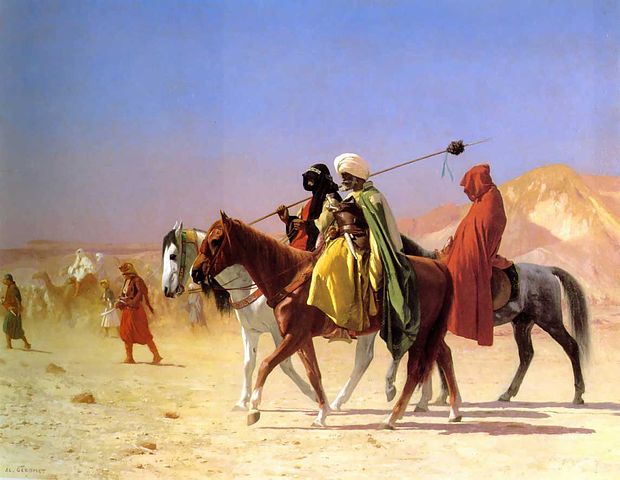
Jean-Leon Gerome painted Arabs Crossing the Desert in 1870. J.L. Gerome’s oil on panel measures 41 x 56 cm and is signed in the bottom left-hand corner. It was owned privately as part of the Najd Collection and was on long-term loan to The Metropolitan Museum of Art.
Jean-Leon Gerome was a great painter of the Orientalism trend. During this time, the artist created a plethora of works, one of which being “Arabs Crossing the Desert.”
This very evocative picture depicts a group of horsemen traversing the expanse of the desert against the background of a range of barren hills on a scorching day under the unforgiving brilliance of the Egyptian sun. The bright apparel of the trekkers gives vibrancy to the otherwise desolate, sepia-toned terrain.
2. The Caravan In The Desert – Alexis Auguste Delahogue
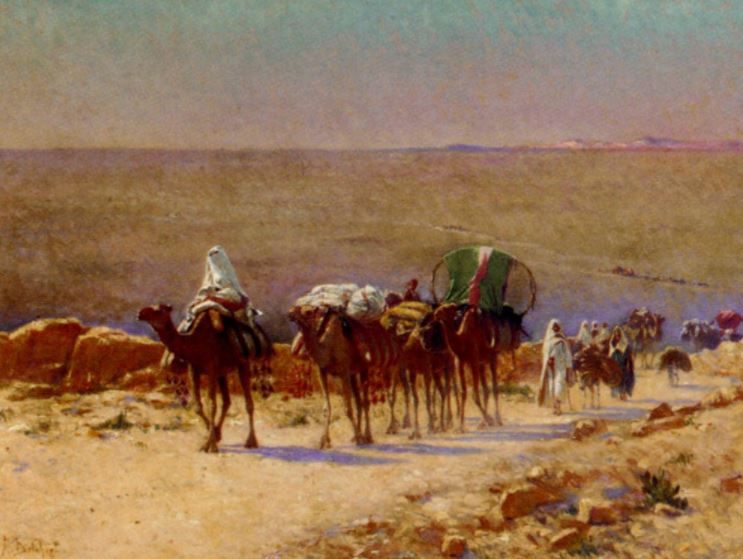
Alexis Auguste Delahogue (1867-1930) – The Caravan In The Desert is an oil on canvas painting that measures (50.3 x 65.5 cm) or ( 19,8 x 25,7 inch ).
Delahogue was an orientalist painter from France. He draws alongside his twin brother, Eugene. Both are interested in landscapes and genre scenes from the Maghreb, and they travel in all directions with a preference for Algeria. He was a prolific painter of bright Algerian themes.
He traveled from Algiers to Constantine, then to El Kantara and Biskra with his twin brother Eugène. They both exhibited as members of the Société des Peintres Orientalistes and the Société des Artistes Algériens et Orientalistes. Alexis Delahogue was a member of the Salon des Artistes Français, where he showed on a regular basis.
3. An Arab Caravan – Albert Zimmerman
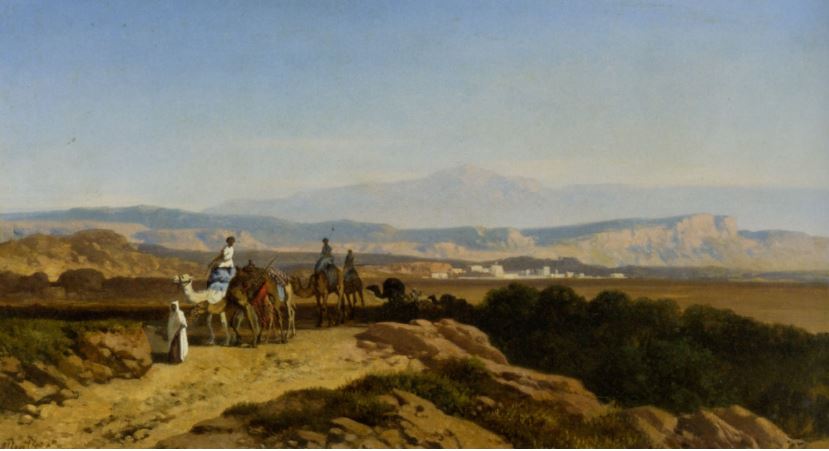
Albert Zimmerman was a self-taught painter who attended the Academies of Dresden and Munich. The Austrian government assigned him to a chair at the Milan Academy in 1857, and he taught at the Vienna Academy from 1860 until 1871.
The Alps and Italy were two of his favorite subjects to paint. He mostly painted landscapes in the realistic manner.
As the title implies, the artwork depicts an Arabian caravan leaving the city in the distance. They’ve traveled a long distance through the enormous plain, yet the city can still be seen from the big level land. As a result, we comprehend the initial impression since the adventure has only just started.
The pictured environment and terrain, with a combination of high mountains and flat ground, depicts Arabian geography, albeit the presented one is from the greener portions of the country, since the Arabian nations are largely deserts.
The caravan is emerging from behind the hill, carrying people and goods on single-humped camels. People are dressed in their traditional garb. And, to our amazement, we can see a long gun hanging from the camel that the controller is steering.
4. The Cinch Ring – Charles Marion Russell
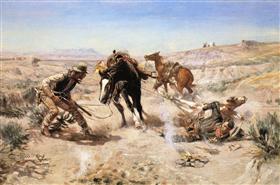
Charles Marion Russell, sometimes known as C. M. Russell, was an American West artist. Russell painted almost 2,000 paintings of cowboys, Native Americans, and landscapes set in the American West, as well as bronze sculptures.
A self-taught artist, he is well-known for his paintings of the American West in the late 1800s. His artwork usually displays dramatic action, tremendous detail, an ornery sense of humor, and sadness over the loss of the “cowboy period” in the American West that he knows intimately.
Charles M. Russell’s artwork, like that of Frederic Remington, is regarded as a remarkable and distinctly American treasure.
5. The Arabian Desert – Frederic Edwin Church
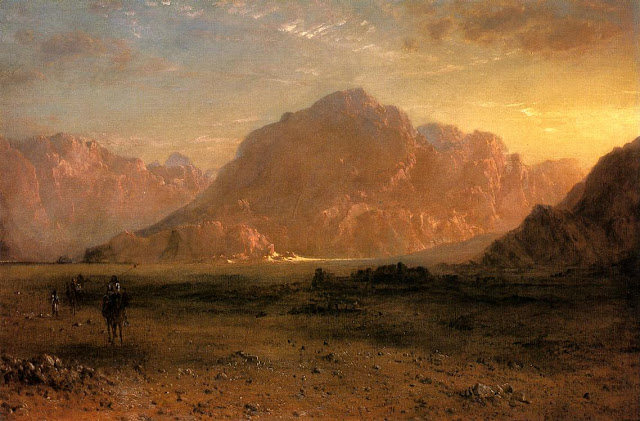
Frederic Edwin Church was a pivotal player in the Hudson River School’s second generation. His paintings emphasized the drama of the American frontier.
However, he did spend almost two years in the Middle East. Church and his wife proceeded on a trip of the Old World, particularly in the Holy Land, in 1867, with their first child as well as his mother-in-law.
Based on the accounts in the gospels, they tracked Jesus’ ministry around Palestine. The artist also visited the Jordanian rock city of Petra on his own.
He would create numerous paintings of desert life along would a a considerable amount of preparatory sketches.
6. Shipwreck in the Desert – Carl Haag
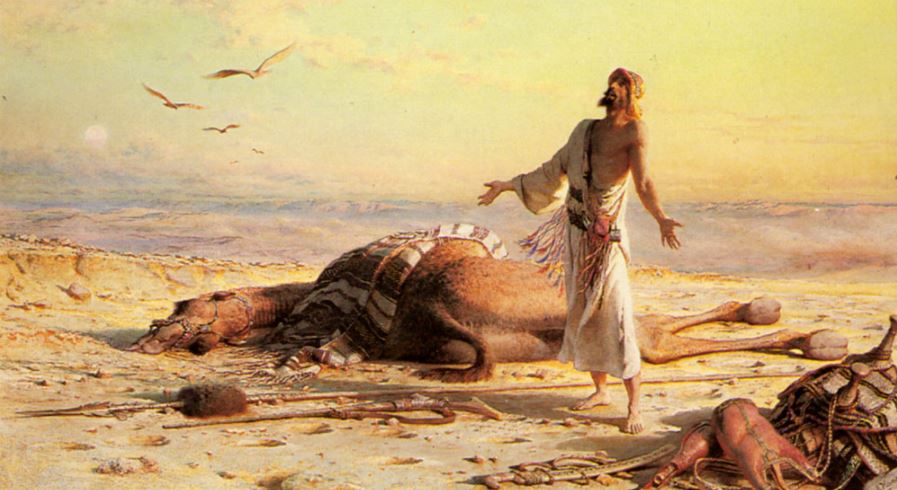
Carl Haag (20 April 1820 – 24 January 1915) was a Bavarian-born painter who became a naturalized British national and served as the duke of Saxe-Coburg and Gotha’s court painter.
Between 1858 and 1860, he traveled to the Middle East, initially residing in Cairo for more than a year and sharing a studio with artist Frederick Goodall. He later visited Jerusalem, Lebanon, and Syria before returning to Cairo.
During this time, he drew several drawings, which he later turned into paintings after returning to London. In 1873-74, he went to Egypt to acquire ideas for new Oriental paintings.
He was a well-known and prolific painter of Holy Land settings. He became well-known for his tightly drawn and carefully detailed paintings of Eastern topics. Haag produced several watercolors of North Africans while traveling over the Egyptian desert from Cairo to Suez.
Shipwreck in the Desert is an example of his work for the British market. Haag has isolated certain lovely individuals in this painting, as he did in previous similar watercolors, to express the notion of Eastern characteristics.
7. Pool In The Desert – Frederic Remington
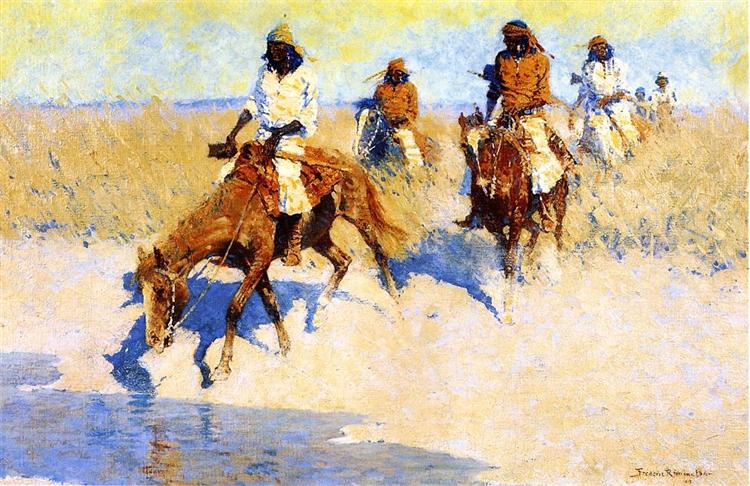
Pool in the Desert is a 1907 oil on canvas painting by Frederic Remington.
Frederic Sackrider Remington was a major artist who was a competent writer as well as an illustrator, painter, and sculpture. His sophisticated and powerful work established him as the preeminent recorder of the American West in the late nineteenth century.
Also Read: Famous Western Artists
Remington’s trips in the New Mexico and Arizona Territories in 1907 and 1908 inspired this picture.
It depicts a group of mounted Navajos making their way through the long grass to a desert waterhole.
It is painted in the Impressionist manner, with Remington emphasizing the picture with a warm palette and powerful brushstrokes
8. Afternoon Sky, Harney Desert – Childe Hassam
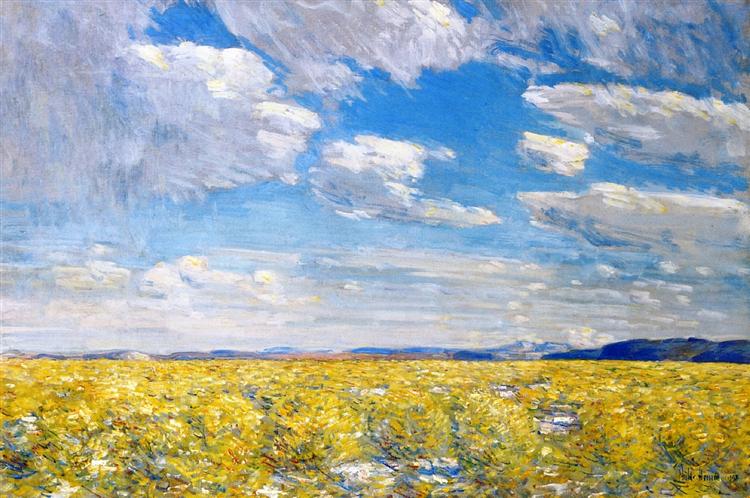
Frederick Childe Hassam (October 17, 1859 – August 27, 1935) was an American Impressionist painter best known for his cityscapes and landscapes. Hassam, together with Mary Cassatt and John Henry Twachtman, played a key role in introducing Impressionism to American collectors, dealers, and institutions.
Over the course of his career, he created over 3,000 paintings, oils, watercolors, etchings, and lithographs, and he was a prominent American artist of the early twentieth century.
The rich colors, gorgeous sky, and boundless space of this wilderness fascinated Hassam, who liked the exhilaration of travel and the challenge of painting new perspectives.
Also Read: Famous Paintings about Rain
Childe Hassam was the first nationally recognized artist to depict Harney County in eastern Oregon. In 1908, he spent many months at Steens Mountain with his friend C.E.S. Wood.
He created over a dozen paintings, several of which were purchased by Portland families, and Afternoon Sky, Harney Desert became the Portland Museum’s first original piece of art.
9. The Fifth Plague of Egypt – J. M. W. Turner
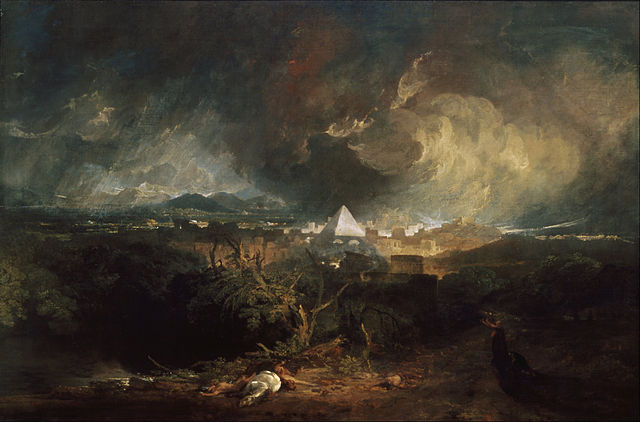
The Fifth Plague of Egypt is an oil painting by Romantic English artist Joseph Mallord William Turner that is presently on display at the Indianapolis Museum of Art. Despite its title, it portrays Moses condemning the Egyptians with the seventh plague of hail and fire.
Although the picture is classified as a historical painting due to its depiction of a biblical scenario, it seems to be a landscape painting, displaying Turner’s skill in landscapes.
The sky and surroundings take priority over Moses and his deeds, transforming him into a part of the nature. The picture depicts nature’s might as being more powerful than man’s, which is negligible.
10. Rest on the Flight into Egypt – Luc-Olivier Merson
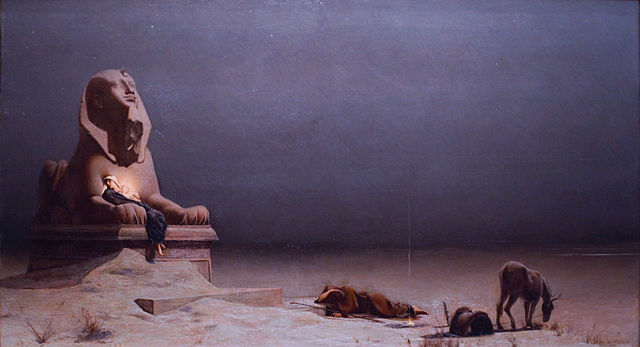
Luc-Olivier Merson, a prominent French Academy painter, never actually visited to North Africa, but his use of archeological detail provides the sense of an eyewitness report, giving fresh life to a time-honored subject.
Merson’s take on this topic is especially distinct and intriguing. The Holy Family is silhouetted against a star-studded desert sky in this image. While the family’s mule naps nearby, Joseph sleeps on the beach, covered in his cloak.
Mary rests with the Christ Child, surrounded by the brilliant light of a halo, between the gigantic paws of the Giza Sphinx.
The work represents a scenario from Matthew’s gospel in which an angel visits to Joseph in a dream to warn him that Herod is plotting to murder the Christ child. When Joseph awoke, he grabbed Mary and Jesus and went to Egypt, where the family would be secure.
Although the remainder of this voyage is not directly stated in the Bible, it became a part of acknowledged Christian iconography by the fourteenth century, and it has served as the foundation for some of the most innovative works of art in Western history throughout the years.

